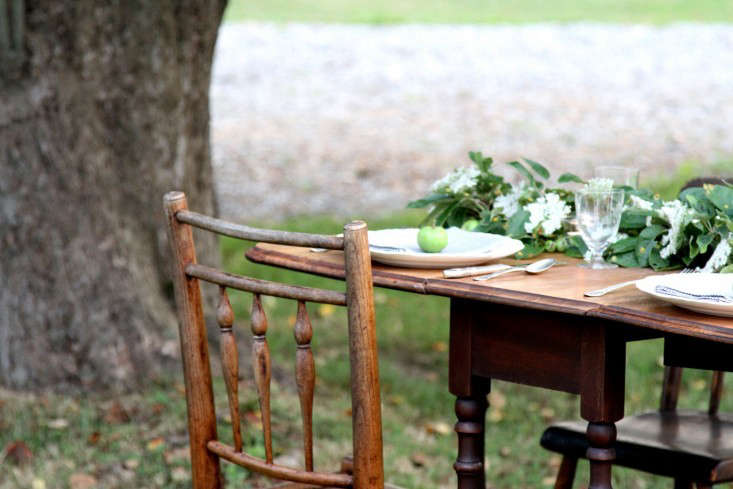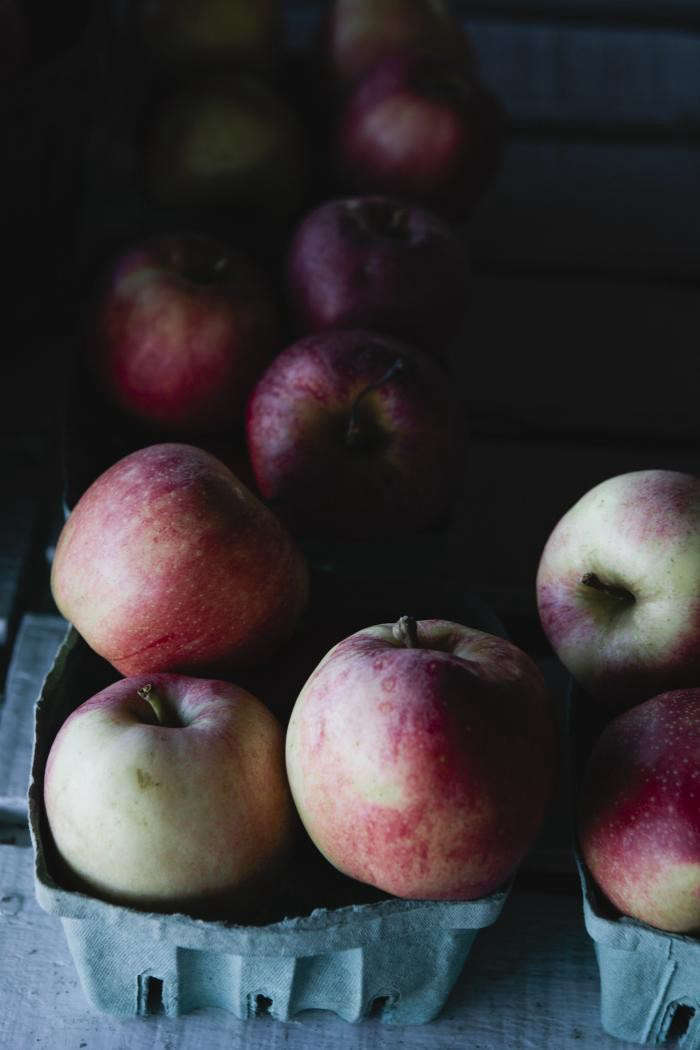Apple Tree, Malus pumila: “Love-Struck”
Have you ever just known that your blind date has some shadowy past behind his chiseled cheekbones? Well, meet apple trees, the plant equivalent of dating baggage. Beneath the rosy exterior, we’ve got the whole Garden of Eden original sin debacle. Then there’s the tiny matter of prompting the Trojan War. And giving Hercules grief in the garden of Hesperides, and delivering the poison to the lovely Snow White. On the plus side, Malus pumila arguably saved Asian and European civilizations by producing one of the only fruits that could last through the long winters. Cab for two, please.
Above: Photograph by Nicole Franzen.
Apple trees, like Mr. Shadowy Cheekbones, take some effort. Two cultivars, the scion and the rootstock, combine to make most varieties. Both should suit your climate. Don’t fret over the minutiae–every state has agricultural extension agencies, and most have detailed resources for selecting, planting, and pruning fruit trees (more than 7,500 varieties of apples are grown worldwide) for your area. You can even grow apple trees in a large container.
Above: A picnic under the apple tree. Photograph by Erin Boyle.
Outdoors, select a sunny, well-drained spot with excellent air flow, preferably on a slope to avoid early spring frosts that can kill off the blossoms. You’ll need to thin the harvest too.

Above: An apple orchard in England. Photograph by Britt Willoughby Dyer. For a wild orchard on Vancouver Island, see Garden Visit: Honey Grove Cottage in the Firs.
When the apples are dime-sized, pinch off all but one per clump. This will give you larger apples and set fruit buds for the following year.

Above: The apple tree walk at Helmingham Hall in Suffolk, UK. Photograph by Kendra Wilson.
Cheat Sheet
- Dwarf or semi-dwarf trees are best-suited for home gardens. Dwarf trees perform well in containers
- The color scheme of apple trees includes pink and white blossoms; glossy green leaves, and gray and brown bark in winter months
- Their gnarly shape makes apple trees a beautiful element in landscape design
Above: Pink lady apples. Photograph by Nicole Franzen. For more, see Fishkill Apple Orchard: A Family Farm Goes Sustainable.
Keep It Alive
- Don’t interplant with walnut trees, which can inhibit growth
- Hardy in growing zones 4-8 (depending on the variety)
- Two is better than one: apple trees are “self-incompatible.” They need another variety of apple tree nearby, one which blooms at the same time of year, in order to produce fruit.
Above: Looking for the World’s Best Applesauce Recipe? Look no further than Dorothy’s Applesauce. Photograph by Michelle Slatalla.
For more of our favorite recipes with apples, see Apple Coconut Crisp (Pack It to Go), Mulled Apple Cider (With a Secret Ingredient), and Raw Kale Salad (With Apples and Almonds).
After your tree gets established, it can last many years, up to a hundred in some cases, providing fruit, tonic bark tea, scented blossoms, and beauty to your landscape. How do you like them apples? (Sorry, couldn’t resist adding one little cliché. At least we didn’t say anything about keeping the doctor away.)
N.B.: Are you thinking of adding a fruit tree to your garden? If so, our Garden Design 101 guides can help:
- Check our Apple Tree field guide for all things related to the apple tree: growing, harvesting and cooking apples.
- See more about fruit trees at Pear Trees 101, Lemon Trees 101, and Persimmons 101.
- In the mood for something crunchy? Browse our state-by-state listings for U-Pick Apple Orchards. California’s best apples? We found them.
Finally, get more ideas on how to successfully plant, grow, and care for apple trees with our Apple Tree: A Field Guide.
Interested in other types of trees? Get more ideas on how to plant, grow, and care for various trees (specimen, deciduous, evergreen) with our Trees: A Field Guide.
Interested in other edible plants for your garden? Get more ideas on how to plant, grow, and care for various edible plants (including flowers, herbs and vegetables) with our Edible Plants: A Field Guide.












Have a Question or Comment About This Post?
Join the conversation